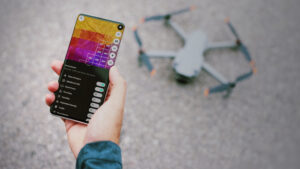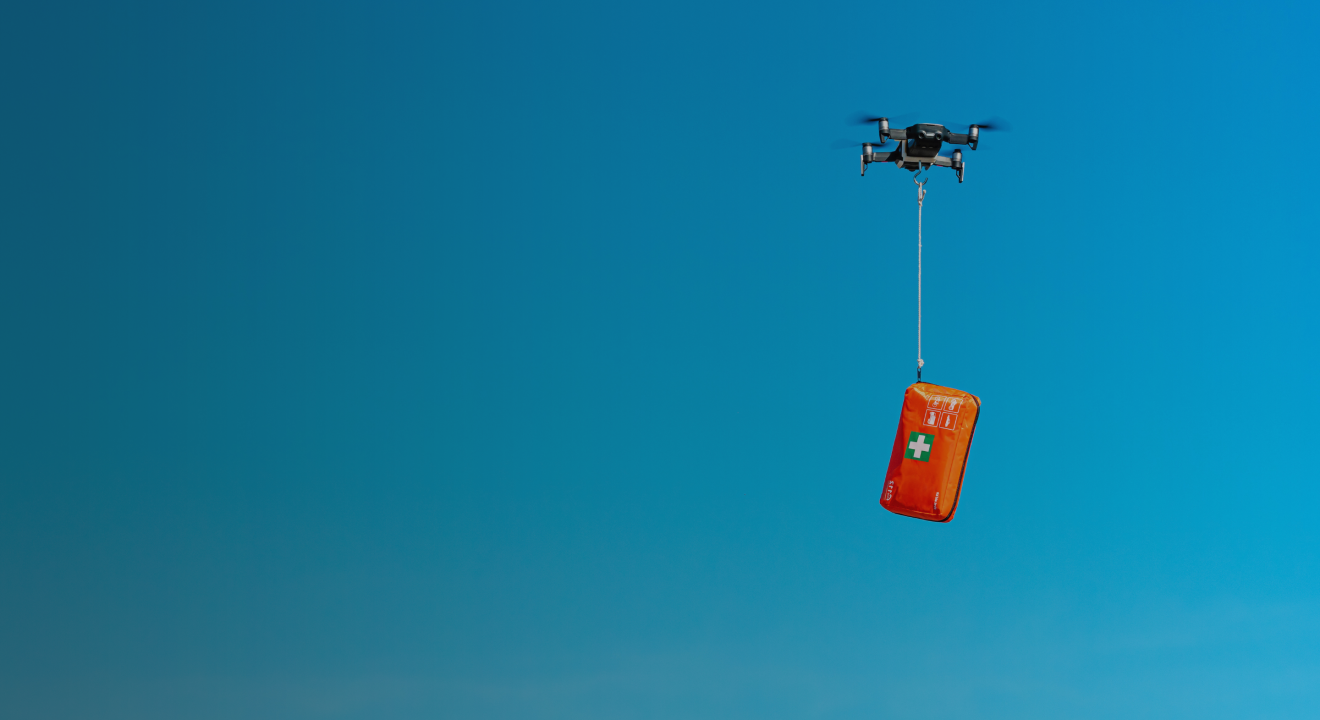It is not an easy endeavor to provide basic healthcare to people. Every day, healthcare professionals, ranging from rescue workers to time-pressed employees in major hospitals, encounter a slew of obstacles—challenges that unmanned aircraft systems, or UAS, can assist them in resolving.
In addition to being able to contact patients who need emergency care, drones also enable them to transport blood, immunizations, as well as essential devices to remote regions. They can deliver blood across hospital wards and medicine within hospital buildings. They have the potential to revolutionize the healthcare system by improving access to healthcare, reducing costs, and saving lives.
According to Dr. Jeremy Tucker, the regional medical director at MEP Health, “Drones are going to decrease the reliance on human beings that provide care and decrease the cost of assisting people.”
Drone technology has taken great strides in recent years and has been demonstrated to be essential for healthcare management. Drones and other unmanned aerial vehicles (UAVs) have tremendous benefits, including prompt results and major features that aid in emergency situations.
Transporting Blood and Hazardous Compounds
Materials containing harmful toxins should always be transported appropriately and in accordance with established biohazard standards. Given that it is an established process, this use case does not necessarily address an outstanding requirement in the medical sector. However, it is frequently very costly and, in certain circumstances, time-sensitive.
Drones are revolutionizing the transportation of blood and hazardous compounds in the healthcare system by providing faster, more efficient, and reliable delivery options. Here are some ways in which drones are influencing this area:
- Improved delivery time: Traditional methods of transportation can be slow, especially in remote or hard-to-reach areas. Drones can help transport blood and hazardous compounds quickly and efficiently, reducing the time between collection and delivery, and ultimately saving lives.
- Increased accessibility: In remote or rural areas, medical supplies can be difficult to transport due to a lack of infrastructure. Drones can fly over these areas, delivering medical supplies directly to their destination, making healthcare more accessible to those in need.
- Enhanced safety: Transporting hazardous compounds can be dangerous, putting people at risk. Drones can reduce the risk of accidents by removing the need for road transport, which can be unpredictable and dangerous.
- Cost-effective: Drones are a cost-effective transportation option, as they require minimal infrastructure and can be operated by a small team. This can help reduce the cost of medical transportation and ultimately make healthcare more affordable.
In recent years, several organizations and companies have been exploring the use of drones for medical transport. For example, Zipline, a California-based company, uses drones to deliver medical supplies, including blood and vaccines, to remote areas in Rwanda and Ghana. Another company, Vayu, is working with the Indian government to deliver vaccines and medical supplies to remote areas in the country.
Vaccine and Medicine Delivery
Drones are also playing a significant role in the delivery of vaccines and medicines in the healthcare system. In many parts of the world, access to healthcare services and medical supplies is limited due to a lack of infrastructure or difficult terrain. This is particularly true in rural and remote areas, where the delivery of vaccines and medicines can be a major challenge.
Drones offer a solution to this problem by providing a fast, reliable, and cost-effective means of transporting medical supplies, including vaccines and medicines. For example, in 2016, the Rwandan government began using drones to deliver blood supplies to rural health clinics, reducing the delivery time from several hours to just 30 minutes.
In 2020, during the COVID-19 pandemic, drones were used to deliver medical supplies, including COVID-19 test kits, personal protective equipment (PPE), and vaccines, in many parts of the world. Moreover, the World Health Organization (WHO) has identified the use of drones for vaccine delivery as a key priority in achieving universal health coverage, particularly in hard-to-reach areas.
Diagnostics
Diagnostics is one of the main applications of drones. When a patient’s sample is collected, it must be delivered to the lab, and the analysis must be completed within a certain duration, which may be as little as two hours because some diagnostic techniques are temperature and time-critical. Alienated populations play an important role here, and there is a developing and expanding market for UAVs.
The very same diagnostic procedures may not be commonly accessible at every institution, clinic, or even chemist, so shuttles are frequently dispatched back and forth between medical institutions. A drone’s long-range, dexterity, and capacity enable it to undertake diagnostic tests under time constraints and has the potential to significantly improve patient outcomes by providing faster and more reliable delivery of medical samples for testing and analysis.
Organ Transfers
The necessity for extremely quick conveyance, such as private aircraft charter or helicopter, is essential given the constrained time window to deliver transplants from donor to patient, which is typically within 4–36 hours, depending on the organ type. Transplant transportation can be accelerated, more efficient, and affordable through the use of drones. In some remote or inaccessible areas, getting an organ to a patient in need quickly can be a challenge. Drones can potentially reduce transport time and increase the success of organ transplants.
For example, in 2019, a test flight was conducted by the University of Maryland Medical Center to transport a kidney for transplant using a drone. The drone flew a distance of 2.8 miles, carrying the organ in a temperature-controlled container, and successfully delivered it to the recipient.
While still in the experimental stage, the use of drones for organ transfers has the potential to save lives and increase the success rates of transplants by reducing transport times and ensuring the organs are kept at the right temperature during transport. However, further research and development are needed to ensure the safety and reliability of this technology in the healthcare system.
Despite the many benefits of drones in healthcare, there are also challenges that need to be addressed. One of the main challenges is the need for regulations and policies governing the use of drones in healthcare. There is also a need for proper training and certification of drone pilots and operators, as well as the development of safety protocols.
In conclusion, drones have the potential to transform the healthcare system by improving access to healthcare, reducing costs, and saving lives. From transporting blood and hazardous compounds to delivering vaccines and medicine, drones are revolutionizing how healthcare is delivered. And with diagnostics and organ transfers also being done using drones, it’s clear that this technology is here to stay. As technology continues to advance and regulations are put in place, we can expect to see even more innovative uses of drones in the healthcare system.
To read more about Skygrid’s efforts to dive deeper into the benefits of drones in healthcare management, visit us here.


